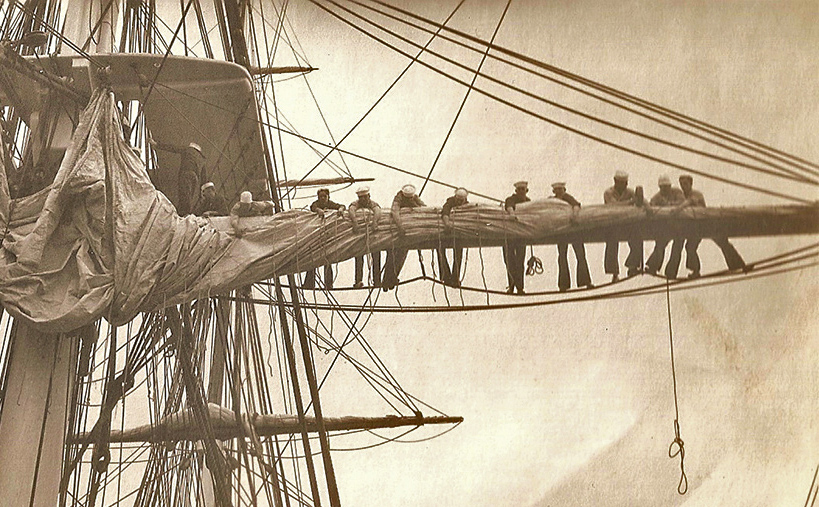It’s an old but puzzling piece of nautical wisdom asserted by self-styled boating experts that “there aren’t any ‘ropes’ on a boat.” Once a rope is put on a boat, it would seem, it ceases to be a rope and becomes something else. Certainly, every new sailor needs to learn that “the rope up there on the right side of the front of the boat, tied to the corner of that triangular sail” is not going to pass muster. The term is “starboard jib sheet.” For clear communication, we need a specific name for each rope on a boat, and of course there is also the great feeling of superiority one feels at confounding lubbers by using arcane terms. But there is no magic transformation or alchemy that happens once a rope crosses the gunwale. It’s still a rope, put to a particular use.
To demonstrate that it is not lubberly to refer to cordage as rope, it is necessary only to point out that the origin of the saying “learning the ropes” is a nautical one. The first appearance of this usage in literature is found in Richard Henry Dana’s certifiably salty Two Years Before the Mast. On a full-rigged ship there can be over 200 lines of running rigging, each of which must have a clear name to avoid confusion and to achieve efficiency in maneuvers. Memorizing the names of all of them is not quite as bad as it sounds, as each line can be designated by the formula “mast; side of the ship; sail; function,” as in fore starboard topgallant brace, or main port topsail clew. The function and sail designation are consistent from mast to mast. And you know starboard from port, right? You really need only know the lines on one side of one mast and the rest can be quickly recognized.
Of course there are ropes aboard that have stuck to their origins and have not changed their names like some Hollywood starlet. Most notable is the bolt rope, a rope sewn into the edge of a sail for reinforcement. In traditional ships, this rope was sewn onto the after side of the head and foot of square sails and the port side luff of the fore-and-aft sails. In modern leg-o-mutton boats, this fortifies the luff of the mainsail, or the luff of the jib.
There are other ropes properly called “ropes”: the bell rope and the tow rope, which I need not explain; the manrope, functioning as a hand rail on a gangway; the dip rope, finished with an eye of chain for various purposes—for example, to prevent chafe when running a mooring line ashore to a rock; tiller ropes, lines which connect the wheel to the tiller on a traditionally rigged ship; and the footrope, which hangs below the yards of a square rigger for the crew to stand on.

Let’s not forget the uses for ropes that, after serving nobly, have outlived their best years and are modified for another use. An example is “baggywrinkle,” one of the more happy-go-lucky terms of the sea. This is a length of old rope which is frayed and used as chafing gear.


Rope, or undesignated cordage, is used for all sorts of things including belts, lanyards, macramé, mats, and fancy work. There are also less agreeable uses of rope such as those employed in the interest of ship’s discipline, like the cat-o-nine-tails, and the lines for keelhauling and the hangman’s noose. I can’t recall the last time I had to resort to these sorts of measures, and that’s exactly what I’d say on the witness stand.
Ropes are among the most ancient technologies developed by humans. We have evidence for their use as long ago as 42,000 years. Perhaps they are as old as stone tools, which go back 3.5 million years, but we can’t be sure because unlike tools, they were made of cellulose and don’t last more than a few thousand years. Our knots must be nearly as old as ropes since using ropes almost always requires them. So as to their origin, it is long lost in the mists of time and I can’t explain why, but I am really fond of that. As Captain Ron, my guru in all things nautical, would say, “nobody knows.”

Thanks: however I mean this as you’ve given me a reminder to watch “Captain Ron” which every crew that’s sailed with me says I need to watch…
Yep, better get on it.